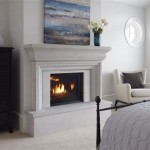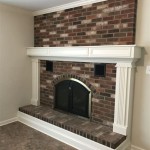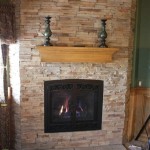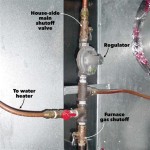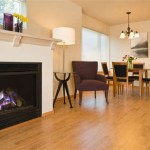Vented Gas Fireplace Installation Near Me: A Comprehensive Guide
The appeal of a fireplace is timeless, providing warmth, ambiance, and a focal point for any living space. A vented gas fireplace offers a convenient and efficient alternative to traditional wood-burning fireplaces, and when considering "Vented Gas Fireplace Installation Near Me," a thorough understanding of the process, requirements, and potential benefits is essential. This article provides a detailed guide to installing a vented gas fireplace, covering critical aspects from planning and preparation to safety considerations and professional installation.
The phrase "Vented Gas Fireplace Installation Near Me" indicates a search for local professionals qualified to handle the complexities of a safe and effective installation. Gas fireplace installations involve gas line connections, proper venting, and adherence to local building codes, making professional expertise paramount. Improper installation can lead to safety hazards such as gas leaks, carbon monoxide poisoning, and fire risks. Therefore, choosing experienced and licensed installers within your geographical area is crucial for a successful project.
Understanding Vented Gas Fireplaces
A vented gas fireplace utilizes a direct venting system to expel combustion byproducts, such as carbon monoxide and water vapor, outside the home. This contrasts with ventless gas fireplaces, which vent directly into the room. Vented fireplaces offer several advantages, including improved indoor air quality and reduced risk of carbon monoxide poisoning. They also tend to produce a more realistic flame appearance due to the greater airflow required for combustion. However, vented fireplaces generally require more complex installation procedures and may be slightly less energy-efficient than their ventless counterparts.
The system typically comprises the fireplace insert or unit, a vent pipe system, and a gas line connection. The vent pipe system can either be a B-vent, which utilizes the home's existing chimney, or a direct vent, which vents directly through an outside wall. Direct vent systems are particularly advantageous for homes without existing chimneys or when the placement of the fireplace precludes using the existing chimney. The choice between a B-vent and a direct vent system depends on factors such as the home's construction, local building codes, and the homeowner's preferences.
When considering a vented gas fireplace, it's vital to assess the BTU (British Thermal Unit) output. BTU rating determines the amount of heat the fireplace produces. A larger room typically requires a fireplace with a higher BTU rating to effectively heat the space. Factors such as the room's insulation, window size, and ceiling height can also influence the required BTU output. Consulting with a professional installer can help determine the appropriate BTU rating for your specific needs.
Planning and Preparation for Installation
Before searching for “Vented Gas Fireplace Installation Near Me,” thorough planning is essential. This includes assessing the space, selecting the right fireplace unit, and obtaining necessary permits. Consider the location of the fireplace. Will it be installed in an existing fireplace opening, or will it require new construction? The location will impact the type of venting system required and the complexity of the installation process.
Selecting the right fireplace unit involves considering factors such as style, size, BTU output, and venting requirements. Gas fireplaces are available in various styles, including traditional, contemporary, and transitional designs. Consider the existing décor of the room and choose a fireplace that complements the overall aesthetic. Ensure the unit meets all applicable safety standards and is certified by a recognized testing agency.
Obtaining the necessary permits is a crucial step in the installation process. Local building codes often require permits for gas fireplace installations, ensuring compliance with safety regulations. Contacting the local building department is essential to determine specific permit requirements. Failure to obtain the necessary permits can result in fines, delays, or even the removal of the fireplace.
Preparing the space involves clearing the area where the fireplace will be installed and ensuring that the gas line and venting system can be safely and effectively connected. This may involve removing existing fireplaces, modifying framing, or installing new gas lines. It's crucial to work with qualified professionals who can handle all aspects of the preparation process.
The Installation Process: A Step-by-Step Overview
The installation process for a vented gas fireplace typically involves several key steps: gas line connection, vent system installation, fireplace unit installation, and final inspection. Each step requires precision and adherence to safety regulations.
The gas line connection is a critical aspect of the installation process. A qualified gas fitter must connect the fireplace to the existing gas line, ensuring a leak-proof and properly sized connection. The gas line must be properly sized to handle the BTU output of the fireplace. Leaks can lead to dangerous situations, including explosions. A gas shut-off valve should also be installed for safety.
The vent system installation involves connecting the fireplace to the vent pipe, ensuring a secure and airtight seal. The vent pipe must be properly sized and installed according to the manufacturer's specifications. For direct vent systems, the vent pipe must be properly routed through the outside wall, ensuring proper clearances and weatherproofing. For B-vent systems, the vent pipe must be connected to the existing chimney, ensuring proper draft and ventilation.
The fireplace unit installation involves placing the fireplace insert or unit into the prepared opening and securing it according to the manufacturer's instructions. This may involve installing framing, shimming, or other support structures. The fireplace should be level and properly aligned to ensure proper operation. All electrical connections must be made safely and in accordance with applicable electrical codes.
The final inspection is a crucial step to ensure that the installation meets all applicable safety standards and that the fireplace is operating correctly. A qualified inspector will check the gas line connection, vent system, electrical connections, and overall installation for any potential hazards. The inspector will also ensure that the fireplace is properly grounded and that all safety features are functioning correctly. This inspection is essential for ensuring the safety and longevity of the fireplace.
Safety Considerations and Professional Installation
Safety is paramount when installing a vented gas fireplace. Gas leaks, carbon monoxide poisoning, and fire risks are potential hazards that must be mitigated through proper installation and safety precautions. Working with qualified and licensed professionals is the most effective way to ensure a safe and successful installation.
Carbon monoxide detectors are essential for any home with a gas fireplace. Carbon monoxide is a colorless, odorless gas that can be deadly if inhaled. Carbon monoxide detectors should be installed in accordance with the manufacturer's instructions and tested regularly to ensure they are functioning correctly. Batteries should be replaced regularly to maintain their effectiveness.
Regular maintenance is also crucial for ensuring the safe and efficient operation of a vented gas fireplace. This includes cleaning the burner, inspecting the vent system, and checking the gas line connections. A qualified technician should perform annual maintenance to ensure that all components are functioning correctly and to identify any potential problems before they become safety hazards.
The “Vented Gas Fireplace Installation Near Me” search should lead to qualified professionals with experience in gas fireplace installations. Ask for references, check their licensing and insurance, and inquire about their experience with similar installations. A reputable installer will be knowledgeable about local building codes and safety regulations and will be able to provide a detailed estimate for the installation process. They will also be able to answer any questions you may have about the installation process and the operation of the fireplace.
Ultimately, the safe and effective installation of a vented gas fireplace requires expertise and attention to detail. By understanding the process, requirements, and safety considerations, and by choosing qualified professionals, homeowners can enjoy the warmth and ambiance of a gas fireplace with peace of mind.

How To Select And Install A Gas Fireplace Log Set Fireplaces Direct Learning Center

If You Have A Gas Fireplace It May Or Not Chimney Flue

Vented Vs B Vent Direct Free Dixie S

The 10 Best Fireplace Installers Near Me With Free Quotes

Gas Fireplace Installation Richmond Propane Setup

The Importance Of Proper Fireplace Installation Embers Custom Gas S

I Built A Fireplace Easier Than Thought

Duluth Forge 27 In W 26000 Btu Black Vent Free Dual Burner Gas Fireplace Insert And Remote Fdf300r At Com

Gas Fireplaces S Installations Prefab Fireplace Installs More

12 Types Of Gas Fireplaces You Need To Know

